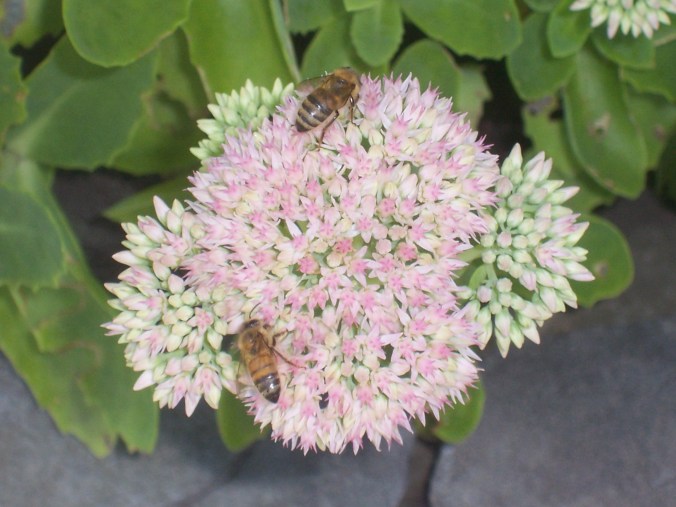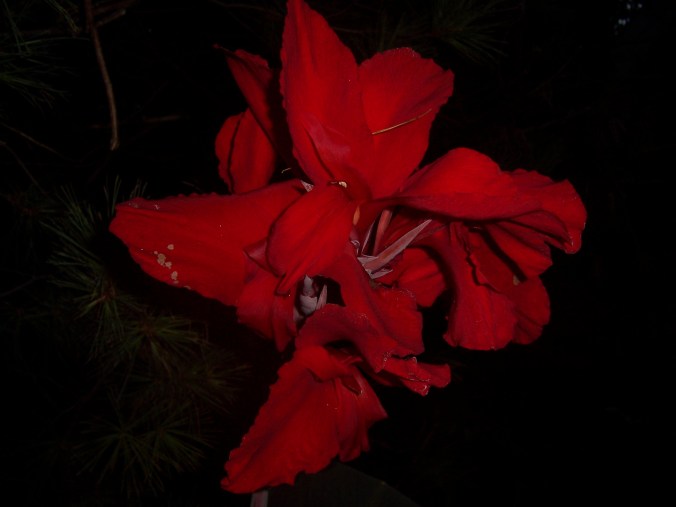My plan was to have a post featuring the blooms of the waning days of summer. With camera in hand, I captured bees tending to their chores on a day that felt more like July than September. If you could see their bee faces, I’m sure they were aglow with autumn joy.


Then, in a matter of hours, a cold front roared through. The clouds thickened and darkened, the wind grew stronger, and fat drops of rain splattered everything. And all the while, the temperature plummeted — so much so, that by sunset, it felt like late October. When I looked out of a window, I saw the last canna bloom (was that a shiver?) glowing. I again grabbed the camera, this time to capture the canna’s last stand — and I was blown away by the vividness of color.
I wondered what other flowers and plants would look like surrounded by chilled darkness and then the glare of a flash. I was limited in my selection because of the time of year, but I did (surprisingly) capture a noisy cricket in the ivy that climbs up the maple tree. He’s resting on the large leaf at the bottom of the photo.
Now the Zinnias, a little battered and chewed up, but still holding on to their color.
This Blanket Flower is probably wishing that it had a blanket.
A few of the old standbys: a faded Hydrangea (take that Madonna!), Liriope spikes, Coleus “Tartan,” and a Caladium close-up.




The Sunflower Sisters, one streaked with orange, the second like a faded version of the first, and the third looking more like celestial eclipse.



Finally, another glimpse of “Autumn Joy” Sedum. The bees were probably in a state of suspended animation at this hour and temperature.

My late-night expedition into the garden was a wonderful way to close-out summer. (Note to self: Next year, don’t wait until the end of summer for a nighttime photo shoot.) Looking back on this growing season, it was exciting to enter the blogging world and to share my life and garden with you. I appreciate greatly all of the comments and encouragement. Now, it’s time for cleaning up, digging and storing tender bulbs, protecting terracotta pots, and the never-ending raking — in other words, the joys of autumn.









































